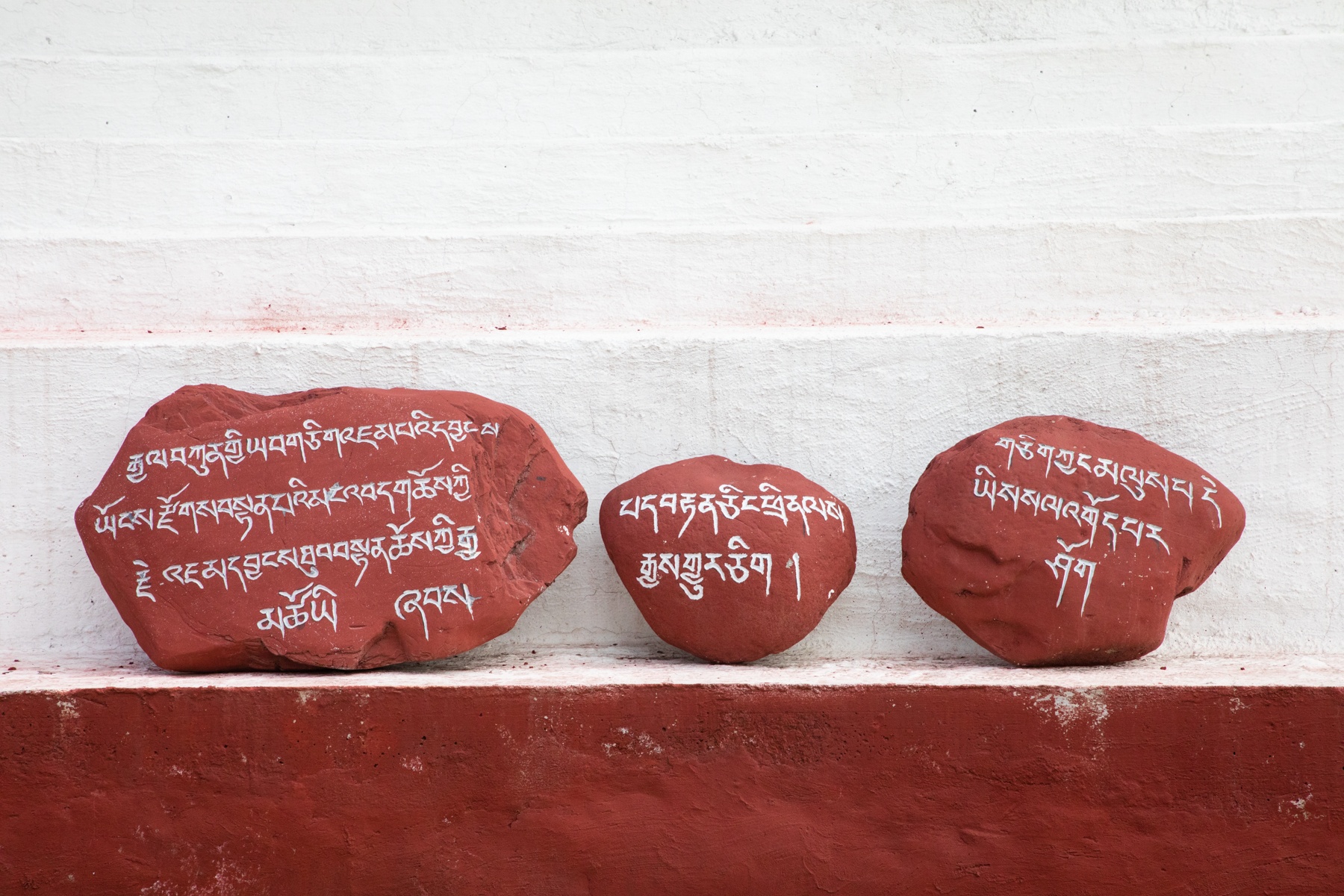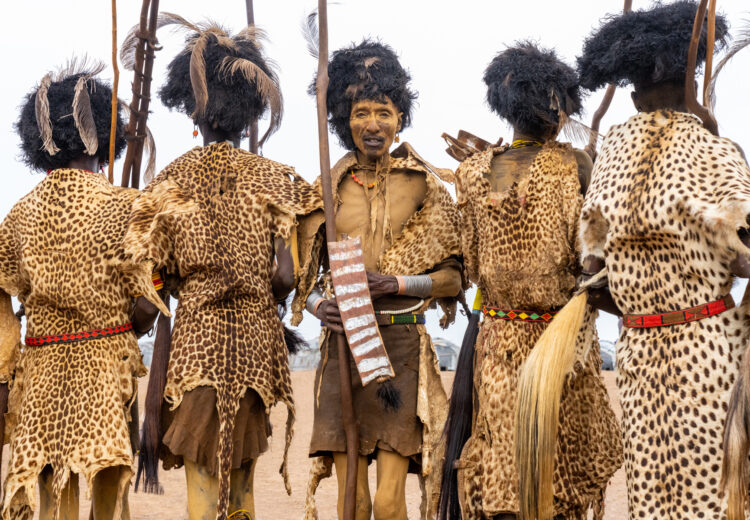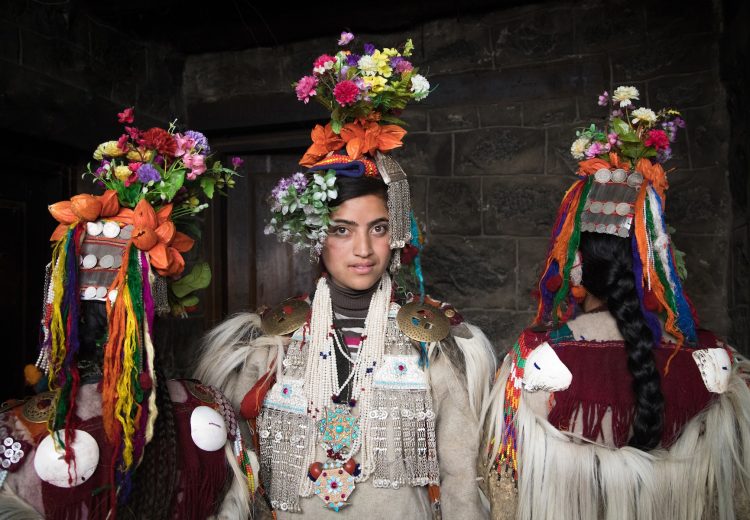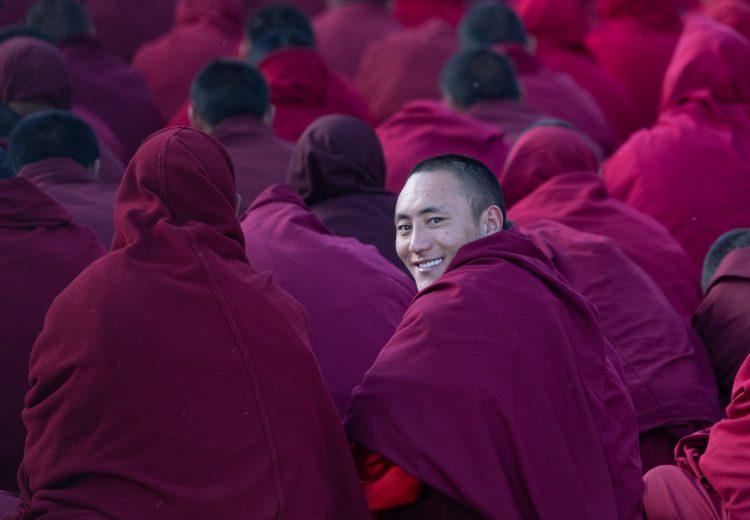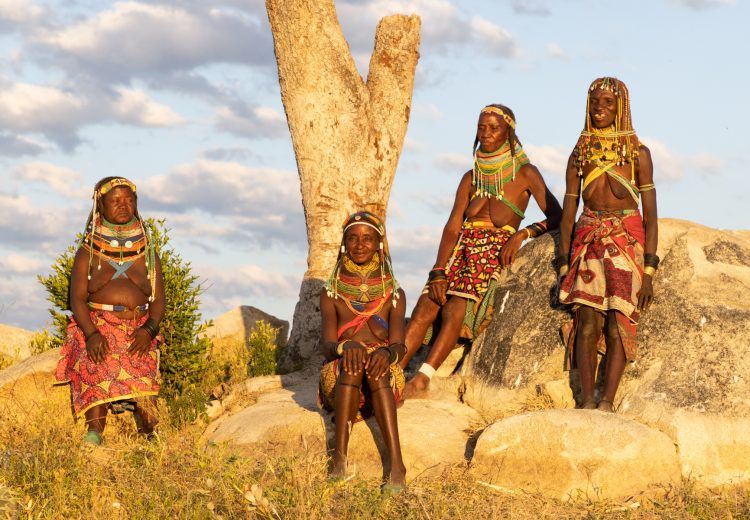China (including Tibet)
TIBETAN SICHUAN – The Litang Horse Festival and much more


















































































Portrait of a nomadic caterpillar-fungus harvester in his tent in remote Sichuan (Image by Inger Vandyke)

Portrait of Dolma outside her home in the Tagong Grasslands region of remote Sichuan (Image by Inger Vandyke)

Monks praying inside Dzongsar monastery (Image by Inger Vandyke)

The blockhouse community behind the nunnery of Tashi, near Tagong (Image by Inger Vandyke)

Portrait of an elderly man playing poker in the square at Kangding (Image by Inger Vandyke)

There are so many angles you can photograph in the animated debate sessions held by Tibetan Buddhist monks (Image by Inger Vandyke)

Tibetan ponies in the snow near Yarchen Gar (Image by Inger Vandyke)

Portrait of Dawei in Sichuan (Image by Inger Vandyke)

Beautifully illuminated rock murals adorn the hillside above the town of Kangding (Image by Inger Vandyke)

Mani stones at Dzongsar (Image by Inger Vandyke)

A cluster of dried rose buds for tea in Sichuan (Image by Inger Vandyke)

A monk leaves the prayer hall candles at Gengqing Monastery in Dege, Sichuan (Image by Inger Vandyke)

A young nun leaves a prayer session in Yarchen Gar (Image by Inger Vandyke)

Portrait of a monk at the debate session in Dzongsar (Image by Inger Vandyke)

A beautiful hand made blockhouse chorten sits at the end of the mani stone wall at the base of the hill near Dzongsar (Image by Inger Vandyke)

The serene smile of a nun entering a prayer session at Yarchen Gar (Image by Inger Vandyke)

A pilgrim makes her way around the elaborately decorated chorten at Lhagang (Image by Inger Vandyke)

A wall of prayer scriptures inside the monastery at Baiyu (Image by Inger Vandyke)

Baiyu scripture blocks in piles (Image by Inger Vandyke)

A Tibetan Fox roams the landscape hunting for Black-lipped Pikas between Dege and Yushu (Image by Inger Vandyke

Dzogchen Monastery in remote Sichuan (Image by Inger Vandyke)

Lunch with the nuns at Yarchen Gar (Image by Inger Vandyke)

Hardy Tibetan ponies grazing in the snow covered hills near Yarchen Gar (Image by Inger Vandyke)

Portrait of a monk leaving prayers at Yarchen Gar (Image by Inger Vandyke)

Masks are an important part of the set at the Shu Feng Ya Yun Opera in Chengdu

A nun enters Tashi nunnery near Tagong (Image by Inger Vandyke)

Fire breathing, dancing and singing feature in the nightly performances of the Shu Feng Ya Yun Opera in Chengdu

Portrait of a young monk in the debate session at Dzongsar Monastery in remote Sichuan (Image by Inger Vandyke)

The giant Buddha statue behind Yarchen Gar after a night of snow (Image by Inger Vandyke)

A nun takes a bowl of corn to a nearby kitchen to prepare for lunch at Yarchen Gar (Image by Inger Vandyke)

Portrait of an older Tibetan lady spinning her prayer wheel at Yarchen Gar (Image by Inger Vandyke)

A pilgrim prays at the prayer candles at Gengqing Monastery in Dege (Image by Inger Vandyke)

A cook attends the fire in the kitchen of Dzongsar monastery (Image by Inger Vandyke)

Nuns walk along the hilltop that overlooks Yarchen Gar (Image by Inger Vandyke)

Portrait of a nomadic girl with her ponies in remote Sichuan (Image by Inger Vandyke)

Portrait of an elderly Tibetan lady taking a break from prayers in Dzongsar (Image by Inger Vandyke

Take a rare, behind the scenes glimpse of the opera performers preparing for the nightly opera in Chengdu

A monk enters a home near the Shuoling Monastery at Luhuo (Image by Inger Vandyke)

Portrait of a Tibetan Fox near Yushu (Image by Inger Vandyke)

Young monks leave the prayer hall at Dzongsar Monastery in remote Sichuan (Image by Inger Vandyke)

Portrait of an opera singer at the Shu Feng Ya Yun opera of Sichuan in Chengdu

A hall of prayer scriptures inside the largest printing monastery in the world, the Parkhang in Dege (Image by Inger Vandyke)

One nun smiles at a mass prayer session in Yarchen Gar (Image by Inger Vandyke)

Dramatic mountains embrace the horizons of Sichuan near the edge of the Tibetan Plateau (Image by Inger Vandyke)

A monk throws wood on to the kitchen fire at Dzongsar monastery in remote Sichuan (Image by Inger Vandyke)

Portrait of a beautiful Tibetan bride next to the prayer wheels of a monastery (Image by Inger Vandyke)

Portrait of a Tibetan bride (Image by Inger Vandyke)

A line of monks enters the prayer room at Dzongsar Monastery in remote Sichuan (Image by Inger Vandyke)

The view of Yarchen Gar after a night of snow (Image by Inger Vandyke)

Stunning doorway inside Dzongsar Monastery in remote Sichuan (Image by Inger Vandyke)

Stunning dancers with reflections grace the stage at the Shu Feng Ya Yun Opera in Chengdu

Monks leave the mass prayer session at Sershul (or Sexu) Monastery in remote Sichuan (Image by Inger Vandyke)

A smiling nun in the crowd at Yarchen Gar (Image by Inger Vandyke)

The daily mass prayers at Yarchen Gar (Image by Inger Vandyke)

Portrait of a monk at dinner inside the Shuoling Monastery at Luhuo (Image by Inger Vandyke)

The stunning emerald lake of Yulong Lacuo lies between Dege and Yushu in Sichuan (Image by Inger Vandyke)

Detailed photograph of the iconic block house architecture of Sichuan (Image by Inger Vandyke)

A Hill Pigeon perches on the broken window frame of a block house adjacent to the ancient monastery of Changen near Yarchen Gar in Sichuan (Image by Inger Vandyke)

A giant statue of Buddha overlooks the settlement of Yarchen Gar (Image by Inger Vandyke)

A monk takes a break to smile at us from the outdoor prayer session at Sershul Monastery (Image by Inger Vandyke)

Pilgrims make their way through the smoke of juniper burning in the chorten at Tashi nunnery, Tagong (Image by Inger Vandyke)

One of the Himalayan Griffons in attendance at a sky burial near Yarchen Gar (Image by Inger Vandyke)

Nuns sitting amongst the solitary meditation cubicles that adorn the hillside behind Yarchen Gar in Sichuan (Image by Inger Vandyke)

Freshly printed prayer scripts at Baiyu (Image by Inger Vandyke)

Portrait of a man attending the mass prayers at Yarchen Gar (Image by Inger Vandyke)

After a night of snowfall, nuns make their way to an early morning prayer session at Yarchen Gar (Image by Inger Vandyke)

A Himalayan Griffon near a vulture dinner close to the road (Image by Inger Vandyke)

The stark beauty of the mountains surrounding Yarchen Gar (Image by Inger Vandyke)

Beautiful black and gold Tibetan script on a sign near Dzongsar in remote Sichuan (Image by Inger Vandyke)

A blockhouse suburb of Yarchen Gar in the snow (Image by Inger Vandyke)

Mani stones at Dzongsar (Image by Inger Vandyke)

Mani stones decorate the wall outside the kitchen in Dzongsar (Image by Inger Vandyke)

Looking through the doorway of Dzongsar to the courtyard where young monks engage in debate (Image by Inger Vandyke)

A beautiful Rong Tibetan lady peers through the elaborately embroidered head dresses of her friends in Kangding (Image by Inger Vandyke)

Tools to print prayer scripts in Baiyu (Image by Inger Vandyke)

Two nuns calling the faithful to pray at Tashi nunnery near Tagong. Their horns are made of bleached seashells (Image by Inger Vandyke)

Monks debating at Dzongsar monastery in remote Sichuan (Image by Inger Vandyke)

The theatrical beauty of the Shu Feng Ya Yun Opera in Chengdu

Portrait of a Tibetan Buddhist nun at the Tashi Nunnery near Tagong in Sichuan (Image by Inger Vandyke)

The recently restored rooftop of the ancient Changen monastery near Yarchen Gar in Sichuan (Image by Inger Vandyke)
|
Monday 28th July –
Wednesday 13th August 2025 Leaders: Ingrid Koedood and a local guide |
17 Days | Group Size Limit 7 (full) |
|
Wednesday 28th July –
Friday 13th August 2027 Leaders: Ingrid Koedood and a local guide |
17 Days | Group Size Limit 7 |
TIBETAN SICHUAN PHOTOGRAPHY TOURS WITH WILD IMAGES
They meet in their thousands every morning at sunrise. Monks and nuns from the incredible institute of Tibetan Buddhist studies at Yarchen Gar in remote Sichuan assemble for a mass prayer before they start their day. Walking amongst them it is easy to get lost in a sea of red robes and serenity as you approach the forecourt of the monastery where between 3000 to 5000 monks and nuns gather to pray. Yarchen Gar is remote, rarely visited and intoxicating.
Tibet. It is a part of the world that evokes so many emotions, a secret corner of western China that spans the roof of the world. It is remote, beautiful and a land that is filled with over 40 different ethnic minorities. Of these 14 of these separate cultures are found in Sichuan, a region of Tibet known as Kham.
Sichuan’s rich diversity of cultures means that the region is often referred to as “The ethnic corridor of China”. Travelling in this beautiful region, you may see many of these traditional people in the streets of villages or attending festivals. Elaborately dressed Khampa women adorn their hair with beads of coral and silver. Khampa men grow their hair long and wrap it around their heads, securing their style with a red tassle. During festivals, the traditional dress of Tibetans is taken to a new level when the local people adorn themselves with copious amounts of amber, coral and turquoise jewellery. Some of the men who compete at the horse festival in Litang dress in wild costumes of jewellery and animal fur. It is in this region that many Tibetan people are able to practice their beautiful culture with very little interference from the outside world. Kham is still home to many thousands of Buddhist monks and nuns who walk koras, chant, spin prayer wheels and pray every day.
Dotted around this remote corner of Tibet are intricately beautiful nunneries and monasteries that are still used as active places of worship. In Sichuan these are found amongst some of the most prolific suburbs of “block houses”, or red coloured log cabin style homes that are normally scattered around the hillsides of the area. In smaller towns like Daofu, the people have constructed incredibly beautiful country homes that feature hand carved wooden cornices, window frames and doorways.
The landscapes of Sichuan are a kaleidoscope of forest clad hills, beautiful vast grasslands, snow capped peaks and emerald lakes.
For photography and, indeed, anyone who is interested in Tibetan culture, Sichuan is one of China’s most fascinating regions.
CHENGDU
Our tour to Sichuan starts in the vibrant Chinese city of Chengdu. Staying in Weng Shu Fang, one of the city’s oldest quarters, we can enjoy tea in a traditional Chinese tea house or wander through charismatic streets visiting galleries and boutiques. Weng Shu Fang is a quiet, ideal base from which to explore the city.
Chengdu is perhaps the most famous city in China for seeing Giant Pandas. We will spend a morning at the Chengdu Research Base of Giant Panda Breeding where we will get to see the rather pampered Giant Pandas of Chengdu enjoying their breakfast of bamboo stalks. The research base has a remarkable number of Giant Pandas and it is quite amusing watching them lie on their backs eating bamboo, covering themselves with bamboo debris in the process! The centre is also home to a smaller number of beautiful Red Pandas.
On our first night in Chengdu we will visit the Shu Feng Ya Yun Opera, which has entertained the citizens of Chengdu since the 1700s. We will arrive early enough at the opera house to photograph the performers preparing for their nightly show, including watching them exchange masks and paint their faces with wild makeup that depicts the myriad of different characters in a traditional Chinese opera.
KANGDING
Nestled in a steep valley, Kangding straddles both shores of the raging Tuo River. While much of the town has been modernised, it still retains a cosy, relaxed atmosphere where the people gather in the town square each night to dance, stroll along the river admiring the mountains surrounding the town or simply to go shopping and dine on excellent Sichuan cuisine.
Kangding was, for many centuries, an important centre for trade. Porters would carry brick tea to Kangding from Chengdu and trade that tea with high quality Tibetan wool. This tea was then traded with merchants in Lhasa after it was transported there along the famous Tea Horse route of western China.
Today Kangding is an attractive centre for Rong Tibetan culture and walking around the streets of the city either by day or in the evening it is possible to spot beautiful Rong Tibetan women wearing their trademark headdresses made from black velvet with hand embroidered, brightly coloured flowers. With luck we will also see Rong Tibetan nuns, with their towering pink and orange hats, walking through the streets of the Kangding during our stay.
By night Kangding comes to life with a communal dance held in the town square. As the sun sets, the music starts and over a hundred residents gather in the square to dance traditional dances while children play together and elders sit and watch. The streets of Kangding are thoughtfully illuminated to highlight the pretty atmosphere of the town and the ancient Tibetan rock murals that decorate the cliffs nearby. It is the perfect base to introduce our trip to the Tibetan cultures of Sichuan.
LITANG
From Kangding we will leave lower altitudes and forested hills behind as we ascend towards the Tibetan Plateau. Trees will give way to vast plains. Raging rivers will give way to beautiful high mountain tarns. We are heading to the highest part of Sichuan, a county called Litang. It is called “Le Tong” in the Tibetan language. “Le” refers to a bronze mirror, “Tong” refers to flat grassland, and together “Le Tong” literally translates into a vast smooth prairie that is like a bronze mirror.
Litang is home to the grandest horse festival on the entire Tibetan Plateau, the annual Litang Horse Racing Festival.
During the festival, the young and old herdsmen from each visiting family ride to the grassland near the county from all directions, taking along tents, Tibetan wool, felt blankets, pots, bowls, yak beef, butter, Tibetan brick tea, Tsampa (barley flour dough) and sweets. There are thousands of colourful nomad tents constructed on the grassland in a majestic tent city, where visiting Tibetan guests to stay overnight.
Litang is a famous “Land of Horsemanship”, so horse racing is the main event for the festival. Horses are elaborately decorated with red tassels on their heads, copper bells on their necks and five-colour saddles. Racing events include speed competitions, endurance competitions, trot competitions and horsemanship competitions.
Compared with a normal Tibetan horse race, the horse racing festival provides a more colourful stage for people to appreciate the folk traditions and customs of Litang. The competitors wander about carrying and putting up tents, wearing Tibetan costumes, making Tsampa and serving buttered tea to guests. Folk performances, Tibetan operas, Tibetan Xianzi dances, Tibetan Guo Zhuang dances and folk songs are also a feature of the festival.
The Litang Horse Racing Festival is a tradition that dates back over 400 years and is at its most bustling on August 1 where we will spend an entire day at the festival photographing the events and the traditionally dressed people in attendance.
TAGONG
Situated at the base of the beautiful Yala Snow Mountain the Tagong Grasslands is home to the 1000 year old Tagong Temple and the beautiful nunnery of Moya. It is a place of wild beauty that features nomadic yak herders, Tibetan horsemen and vast, stunning Tibetan Plateau scenery.
We will spend a full day exploring the monasteries and nunnery at Tagong, visiting prayer sessions, sky burial sites and walking numerous koras, or prayer circuits, with traditional Tibetan pilgrims, monks and nuns.
After the second night we will embark on a relatively easy trek to a remote part of the Tibetan Plateau to spend a night camped out in a yak wool tent with nomadic Tibetan yak herders. We will live with them for a night to learn about their ways and how they survive in this beautiful high altitude wonderland.
Before we leave Tagong we will stop to photograph the thousands of rock paintings lining the Liqi River.
DAOFU
On the road between Tagong and Luhuo is the beautiful region of Daofu. While the town of Daofu itself is rather characterless, it sits in the middle of numerous pretty villages that feature Daofu traditional country houses. We will stop to view a number of these on our journey.
Daofu Houses are commonly known as “Bengke”. In Tibetan, “Beng” means “built and supported by wood”, and “ke” means “houses”. Daofu Houses have frames made of logs and walls built with mud or stone pieces. Externally they look like the region’s more basic block houses with slightly more decoration. Internally, however, they feature brightly coloured Tibetan murals, columns, entrances and courtyards.
LUHUO
The bustling town of Luhuo sits at the base of a hill that is crowned by the beautiful Shuoling Monastery. Arriving in Luhuo we will walk uphill through our first block house suburbs to the monastery which has breath taking views over Luhuo and the countryside that surrounds it. If time allows we may join the monks of Shuoling for prayers and we shall spend some time exploring this beautiful monastery complex with its wildly coloured doors, block house buildings and its beautiful, ancient prayer hall.
YARCHEN GAR
From Luhuo we will drive through the incredible Ganzi Mountains to the second biggest institute for Tibetan Buddhist studies in the world at Yarchen Gar.
Shortly before we reach Yarchen we will stop to photograph the ancient, deserted Changen Temple with its crumbling block houses in its monastic complex.
Arriving in Yarchen we will head straight to the giant statue of the Buddha that overlooks the settlement of Yarchen to get our first glimpse of this magnificent place. From the Buddha statue we will see the mass community of ramshackle huts that is home to over 5000 Tibetan Buddhist nuns. It sits on a large bend of a river that separates the nuns from the monks living closer to the town on the other side.
It is difficult to describe the wonder of Yarchen Gar in words. Imagine joining a prayer session attended by over a thousand monks or walking in a throng of several thousand nuns towards their daily classes and you will start to realise how special Yarchen Gar is.
The centre has several monasteries and buildings for learning. Scattered amongst them are whole suburbs of ramshackle, tightly constructed huts. We will explore the entire community, join nuns having lunch, we will walk narrow prayer circuits and if we are lucky, we may even get to witness a sky burial.
Surrounding the entire community of Yarchen is a massive prayer circuit that forces pilgrims to walk through the nearby fields in any weather, spinning prayer wheels as they go. We will join a part of that circuit, mass prayer sessions and formal teaching classes during our visit to Yarchen. We will also be searching for traditional Tibetan people in the sea of monks and nuns that assemble at Yarchen Gar every day. Between the nun community on the river and the giant Buddha statue is a series of roughly constructed meditation huts for devotees of Buddhism to use in their silent study. These make for beautiful photographic subjects against the spectacular backdrop of Yarchen Gar town.
With its almost 10,000 strong population of monks and nuns, visiting Yarchen is a highlight of the Wild Images trip to Sichuan.
KHARTOK & DZONGSAR
Hemmed in by a tight horseshoe shaped valley on three sides, the ancient monastery of Khartok sits in the middle of a stacked block house village which is beautiful for photography. The monastery itself dates back to 1159 and is one of the six principal monasteries of the Nyingma school of Tibetan Buddhism. Its extraordinarily ornate rooftop crowns a small, square prayer room with some rather odd statues of sky burials at its base.
The original monastery at Dzongsar was constructed in 758 but reconstructed again in 1958. It is painted in the traditional red, black and white stripes of Sakya Buddhism and is one of the most photogenic monasteries we will visit on our trip. At Dzongsar we may meet many traditional Tibetan people attending prayers, including beautifully dressed Khampa men and women. At Dzongsar two lively and animated daily debating sessions are held by the resident monks and we will be able to wander around these capturing photographs of the attending monks as they gesticulate wildly over the answers given by their opponents. These debates usually
THE PARKHANG PRINTING MONASTERY AT DEGE
As the largest functioning printing monastery in the world, the Parkhang is a small but incredibly ornate monastery that features beautiful doorways, an enclosed courtyard and an ancient printing press where prayer scripts are still printed in the same way workers have been doing them for centuries.
We will make two visits to the Parkhang. One in the late afternoon to enjoy an initial viewing. The following morning we will return after early morning prayers at the neighbouring Zhuqing monastery to see the printing process in action.
SERSHUL
Crossing the incredibly beautiful Haizi Shan mountains we will begin to see some of the more charismatic Tibetan Plateau wildlife including Black-lipped Pikas, Tibetan Foxes, Bar-headed Geese and Bearded Vultures.
As we near the nomadic trading town of Sershul, we will stop to explore the stunning emerald green lake of Yulong which is surrounded by high mountain peaks. Its shoreline is adorned with beautifully painted boulders, each of which are devoted to different figures of Tibetan Buddhism.
We plan to arrive at the spectacular Sershul monastery on the outskirts of the city for afternoon prayers and debating. The mass prayer at Sershul takes place at a beautiful monastery building that dates back to 1760 and when the monks finish their prayers they head, in their hundreds, to the forecourt of Sershul for debates. We will stay here until the prayers have concluded or until the light fades at sunset. Sershul is undoubtedly one of the most beautiful debates in all of Tibet to witness and photograph.
YUSHU
Leaving Sershul we will make our way by road towards the modern city of Yushu, stopping to photograph scenery on our way.
Today we will visit the cave monastery of Vairocana, which is sometimes known as the Princess Wencheng Temple. In the 7th century, a marriage took place between Princess Wencheng of the Tang Dynasty and Sontzen Gampo of Tibet Their union was and still is regarded as one of the most important in Chinese history as it united the two countries of China and Tibet. Vairocana was where they both lived for a while during their long journey to Lhasa. This beautiful small temple is filled with ancient Buddhas and intricate murals dating back to the time of Princess Wengchen.
As we approach Yushu we will venture out on to the Batang Grassland and visit the largest nomadic tent in the world constructed of yak wool.
Reaching Yushu towards the end of the day we will enjoy our first visit to its giant Mani Stone Wall. Recorded in the Guiness Book of Records as the largest structure of its kind in the world, the Yushu Mani Stone Wall is made from over 2.5 billion hand carved stones. A kora circuit surrounds its base and we shall walk this with the many pilgrims that circumambulate it each day. The wall itself provides an incredible backdrop for photography. As a custom for our visit, we shall also purchase our own mani stones to place on the wall, in the same way that pilgrims have done for centuries.
In Yushu we will enjoy our final dinner of the tour before we fly out to Chengdu the following day.
IMPORTANT
There have been periodic closures of a number of the key historical sites in Sichuan owing to ‘redevelopment’. Flexibility has been key, and this itinerary represents our preferred route, but may need to be adjusted according to the situation when we visit.
Wild Images’ parent company Birdquest has been operating tours to Sichuan since 1984.
EXTENSION
Since our tour to Sichuan ends in Chengdu it is possible to connect with one of over 16 direct flights that operate between Chengdu and Lhasa daily. Ideally you would need 3 nights in Lhasa to fully enjoy everything this iconic city has to offer. Please contact our office about extending your journey to Lhasa. We can arrange an unguided stopover so you can visit the wonders of Tibet’s heart including the Potala, Jokhang, the summer palace at Norbulinka and the incredible monastery of Ganden.
………………………………………………………………………………………………………………………..
Accommodation and Road Transport
Transport on the remote Sichuan trip will be in a climate controlled mini bus for the duration.
Accommodation is in good standard hotels and guest houses during the trip with the exception of the night spent in a basic guest house in Dzongsar.
Walking
Most of the walking is on flat ground or on hard, grazed grasslands. There will be some high altitude walks over undulating ground. We will ascend from Chengdu gradually into Litang so we can acclimatise to the higher altitude. From Litang (the highest altitude part of our trip) we will descend to Tagong. The trek to the nomad camp is relatively simple and many stops will be made for photography and rest on the way to and back from the camp.
Climate
The steamy climate of Chengdu in July is quite a contrast from the cooler, drier temperatures that we will experience in the grasslands of Sichuan. In Chengdu you can expect humid daytime temperatures up to around 30C and minimum temperatures of around 22C. In Litang the average daily temperatures will be around 17C and night-time temperatures around 6C.
Photographic Equipment
The remote Sichuan trip is principally a travel photography trip and the lenses that you will mostly use will be good street lenses like the 24-105mm Canon lens or a 70-200mm. Wide angle lenses will be helpful on this trip for architecture and prayer rooms.
Opportunities for wildlife photography are limited to the day we travel between Sershul and Yushu but if you wish to photograph animals like Tibetan Foxes we suggest you bring a larger prime or zoom lens in excess of 300mm.
At the time of the 2018 Wild Images tour in Sichuan, photography using a DSLR inside the ancient Parkhang printing monastery was prohibited. Photography using phones and compact cameras, however, was allowed. If you would like to do more extensive photography within the Parkhang, we would suggest you bring a good quality compact camera that can handle both low light and shoot RAW images for our visit.
Sichuan is a wondrous place for cell phone photography. Some recent model phones cope very well with low light situations. The newer iPhones have a Portrait feature which is fun to work with on this trip and you can also create beautiful panoramas from the places we will visit. Cell phones are also a nice tool for creating mini videos.
If you have questions about what equipment you ought to bring, please contact our office.
Photographic Highlights
- Take a unique, behind the scenes look at the Shu Feng Ya Yun Opera in Chengdu, visiting the singers in preparation for their nightly performance
- A chance to photograph the beautiful Red and Giant Pandas in Chengdu
- Attend the intensely competitive Litang Horse Festival to photograph the festivities and traditionally dressed Tibetan people who attend it
- Camp overnight with nomadic yak herders in the grasslands of Tagong
- Walk numerous prayer circuits, or koras, with Tibetan pilgrims
- Photograph rarely visited monk debating sessions at Dzongsar and Sershul
- Visit the largest mani stone wall in the world at Yushu
- Watch the intricate and precise production of prayer books at the Parkhang printing monastery in Dege
- Join mass prayer sessions with thousands of monks and nuns at Yarchen Gar
- Join numerous prayer sessions for Tibetan Buddhist monks and nuns
- Search for Tibetan Plateau wildlife including Tibetan foxes, Bearded Vultures and Black-lipped Pikas
- Explore some of the most ancient and remote monasteries and nunneries in China
- Visit the intricately constructed country houses in Daofu
- Photograph superb examples of Tibetan Block-house architecture, a signature style of the Sichuan region
OUTLINE ITINERARY
- Day 1: Our tour starts with dinner in Chengdu
- Day 2: Morning visit to the Chengdu Research Base of Giant Pandas. Afternoon street photography in Chengdu's Old Quarter. Evening at the Opera
- Day 3: After breakfast we will drive to Kangding and spend an afternoon doing street photography in the city
- Days 4-5: Drive from Kangding to Litang to attend the horse festival
- Days 6-9: Drive to the remote Tagong grasslands to visit our first block houses, monasteries and nunneries and nomadic yak herders
- Day 10: Leave Tagong and drive to Luhuo stopping to photograph the rock paintings at Liqi River. Afternoon spent at Shuoling Monastery
- Days 11-12: Drive from Luhuo to Yarchen Gar where we will spend two days photographing the second largest institute for Tibetan Buddhist studies in the world
- Day 13: Final morning at Yarchen Gar. Drive to Khartok Monastery then to Dzongsar where we will visit the monastery and stay overnight
- Day 14: Visit to Sakya sect monhastery for monk debate. Drive to Dege. Afernoon at the Parkhang Printing Press
- Day 15: Final morning at Dege before driving to spectacular Yulong Lacuo lake and the monastery of Sershul. Overnight in Sershul
- Day 16: Leaving Sershul we will drive towards Yushu making stops for photography. Sunset shoot at the Mani Stone Wall in Yushu
- Day 17: Final morning of photography in Yushu before leaving for Chengdu by flight in the afternoon. Our tour will end in Chengdu with the arrival of our flight.
To see a larger map, click on the square-like ‘enlarge’ icon in the upper right of the map box.
To see (or hide) the ‘map legend’, click on the icon with an arrow in the upper left of the map box.
To change to a satellite view, which is great for seeing the physical terrain (and for seeing really fine details by repetitive use of the + button), click on the square ‘map view’ icon in the lower left corner of the ‘map legend’.
PRICE INFORMATION
Wild Images Inclusions: Our tour prices include surface transportation, accommodations, meals and entrance fees.
Our tour prices also include the following flight: Yushu-Chengdu.
Our tour prices also include all tips for local guides, drivers and accommodation/restaurant staff. We also include payments to local people who are willing to be photographed.
Deposit: 20% of the total tour price. Our office will let you know what deposit amount is due, in order to confirm your booking, following receipt of your online booking form.
TO BOOK THIS TOUR: Click here (you will need the tour dates)
2025: provisional £6000, $7650, €7300, AUD12160. Chengdu/Chengdu.
2027: provisional price £6240, $7950, €7590, AUD12640. Chengdu/Chengdu.
Single Supplement: 2025: £550, $710, €670, AUD1120.
Single Supplement: 2027: £570, $730, €690, AUD1160.
If you are travelling alone, the single supplement will not apply if you are willing to share a room and there is a room-mate of the same sex available.
This tour is priced in US Dollars. Amounts shown in other currencies are indicative.
Air Travel To & From The Tour: Our in-house IATA ticket agency will be pleased to arrange your air travel on request, or you may arrange this yourself if you prefer.
TIBETAN SICHUAN PHOTOGRAPHY TOUR: DETAILED ITINERARY
DAY 1
Our remote Tibetan Sichuan photography tour starts with dinner on our first night in Chengdu.
DAY 2
On our first morning we will visit the Chengdu Research Base of Giant Panda Breeding. During the day we may take a break, indulge in some street photography around Weng Shu Fang or visit the pretty Chengdu People’s Park, where residents of the city take a break to enjoy beautifully manicured public gardens.
We will enjoy an early dinner before spending an evening at the beautiful Chinese opera of Shu Feng Ya Yun.
DAY 3
We will leave Chengdu after breakfast and drive to Kangding for an afternoon and evening of street photography.
DAYS 4-5
From Kangding we will drive to the high altitude region of Litang to attend the Litang Horse Festival for 2 nights and one full day photographing the traditional people and the fast paced festival events.
DAYS 6-9
Driving to the remote Tagong grasslands from Litang we will spend four nights at a local hotel while w3e visit the first of the pretty block houses that are iconic to Tibetan Sichuan. We will also visit remote nunneries and spend a full day with the nomadic yak herders of Tagong.
DAY 10
Leaving Tagong we will stop to photograph the many hundreds of rock paintings on the Liqi River before driving to the city of Luhuo to visit Shuoling monastery at sunset.
DAYS 11 to 12
From Luhuo we will travel over the beautiful Ganzi mountains to the second largest institute for Tibetan Buddhist studies in the world at Yarchen Gar. We will spend two nights here to fully appreciate its beauty, explore its surrounding grasslands, attend prayers and meet with the many thousands of monks and nuns that call Yarchen Gar home.
DAY 13
After a final sunrise photography shoot at Yarchen we will leave to continue our journey to the remote and isolated ancient monastery of Khartok. We will enjoy photography at this monastery and the surrounding block house village before we take a short drive to the beautiful monastery town of Dzongsar where we will do an afternoon shoot at the monastery on the hill overlooking the town.
DAY 14
During our time in Dzongsar we will visit the Sakya sect monasteries for prayers and debates before we leave Dzongsar for Dege. Arriving in Dege, we will enjoy our first visit to the intricately beautiful Parkhang printing monastery in the late afternoon.
DAY 15
We will return to the Parkhang to see the workers in action during the morning before taking a brief break for shopping in the town. After we leave Dege we will embark on a spectacular drive to Sershul via the emerald lake Yulong Lacuo and the beautiful Haizi Shan mountains.
Before we reach Sershul we will enjoy a stop at the incredible Sershul monastery for mass prayers and debating near sunset.
DAY 16
Leaving Sershul we will drive slowly towards the city of Yushu stopping to visit the Vairocana Monastery and the world’s largest yak wool tent on the way. We will enjoy a sunset photography session at the giant Mani Stone Wall in Yushu before we enjoy a final dinner in the city.
DAY 17
Our Tibetan Sichuan photography tour ends this afternoon at Chengdu airport, following a flight from Yushu.
Tibetan Sichuan Photography Tour Report 2018
The inaugural Wild Images South East Tibet expedition was a journey to explore some the last corners of Tibetan culture in western China. Its path followed the original Sichuan Tibet highway from Chengdu to Lhasa. Over the course of the expedition our guests were to witness some of the more extraordinary practices of the Tibetan […]
View Report
Guest Portfolio: Tibetan Sichuan 2018 – Kristyn Taylor
In 2018 Wild Images leader Inger Vandyke guided our first reconnaissance tour to Eastern Tibet and Sichuan. A culmination of over two years of planning, this journey followed a part of China’s ancient Tea Horse Route, the traditional trading route for the trade of Tibetan ponies for Chinese tea, a practice dating back at least to […]
View Report
Other Wild Images Tours for People Photography
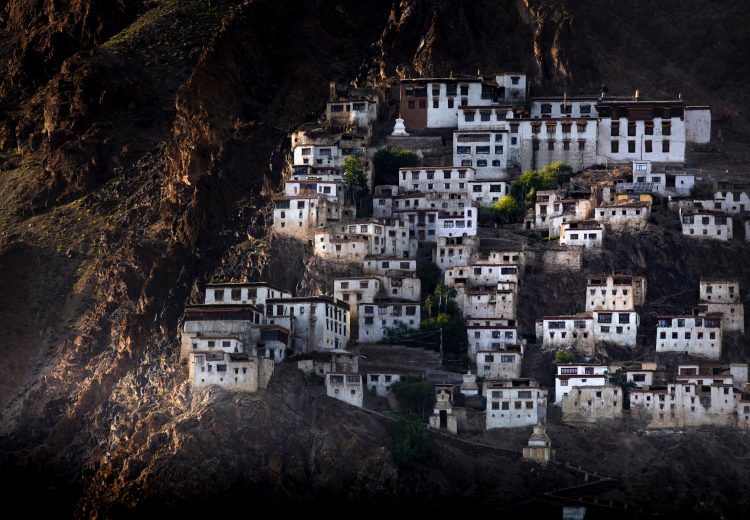
India
September-October 2025
ZANSKAR: A REMOTE BUDDHIST WORLD – Exploring the most isolated valley of the Indian Himalayas
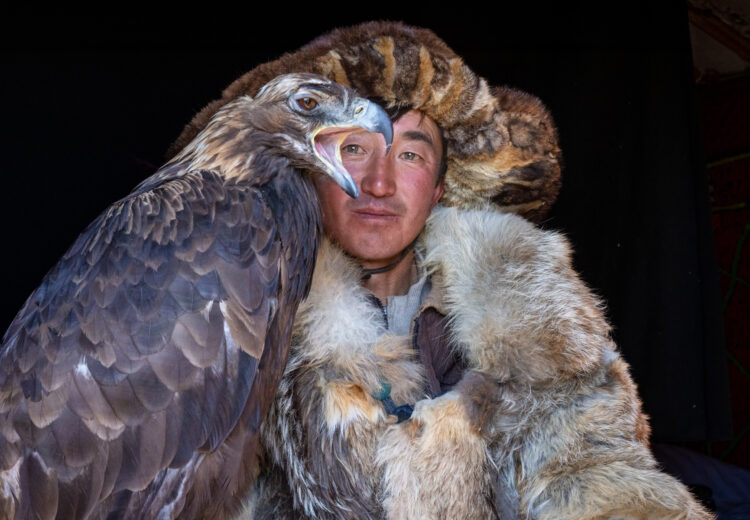
Mongolia
September 2026
EAGLE HUNTERS OF WESTERN MONGOLIA: Including the Altai Kazakh Eagle Festival at Sagsai
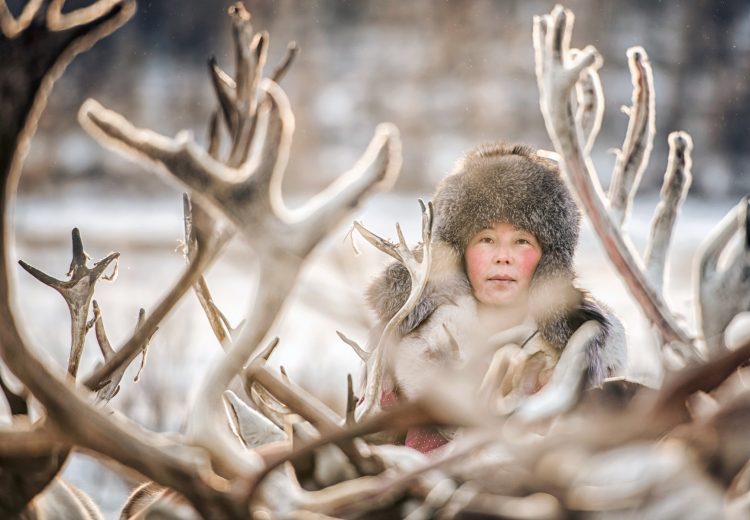
Mongolia
September-October 2027










